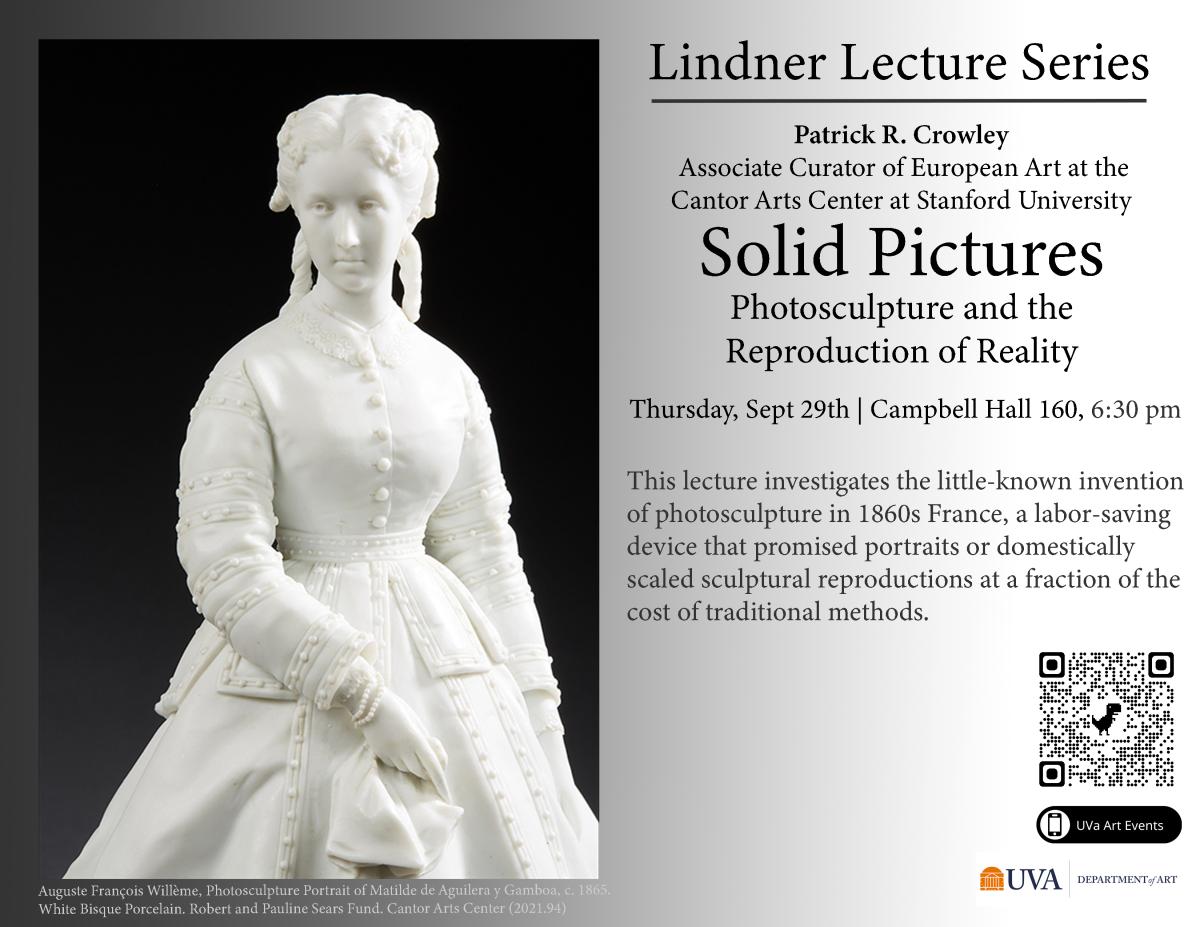Solid Pictures: Photosculpture and the Reproduction of Reality

Patrick R. Crowley, Associate Curator of European Art, Cantor Arts Center, Stanford University
Solid Pictures: Photosculpture and the Reproduction of Reality
This lecture investigates the little-known invention of photosculpture in 1860s France, a labor-saving device that promised portraits or domestically scaled sculptural reproductions at a fraction of the cost of traditional methods.
Bio:
Patrick R. Crowley is the Associate Curator of European Art at the Cantor Arts Center at Stanford University, where he oversees art from antiquity to 1900. Previously, he was Assistant Professor of Art History and the College at the University of Chicago. A specialist in sculpture, both ancient and modern, his research spans a broad range of questions about media and materiality in Roman art and visual culture and its afterlives in European classicisms. His research has been generously supported by the Center for Advanced Study in the Visual Arts, the Getty Research Institute, and the National Endowment for the Humanities. He is the author of The Phantom Image: Seeing the Dead in Ancient Rome (University of Chicago Press, 2019).
Abstract:
On May 17, 1861, François Willème presented his invention of photosculpture to the Société Française de Photographie in Paris. It is difficult to overstate the significance of Willème’s technical achievement, in many ways the precursor to modern 3D printing, which combined the sensuous plasticity of sculpture with the vaunted reality-effects of photography. Although little-known today, it serves as a key example of the marriage of art and industry in the Second Empire. The turnaround must have seemed almost magical: the photographic capture of the subject in the studio took only ten seconds, and a finished sculpture was promised in as few as forty-eight hours. Thanks to the labor-saving nature of its mechanical apparatus, photosculpture promised to democratize portrait sculpture, a traditionally elite category thanks to its considerable expense, making it truly affordable for the middle class. And yet, Willème’s invention was not a commercial success; he operated his Paris studio for only five or six years until closing it in late 1867 or early 1868, by which time various competitors had devised and patented their own versions. This lecture, in anticipation of an exhibition at the Cantor Arts Center at Stanford, investigates the technical aspects of photosculpture in the 1860s, as well as its even more obscure afterlives in the 1890s through the 1930s, to reveal its ambivalent, even opaque relationship to labor.